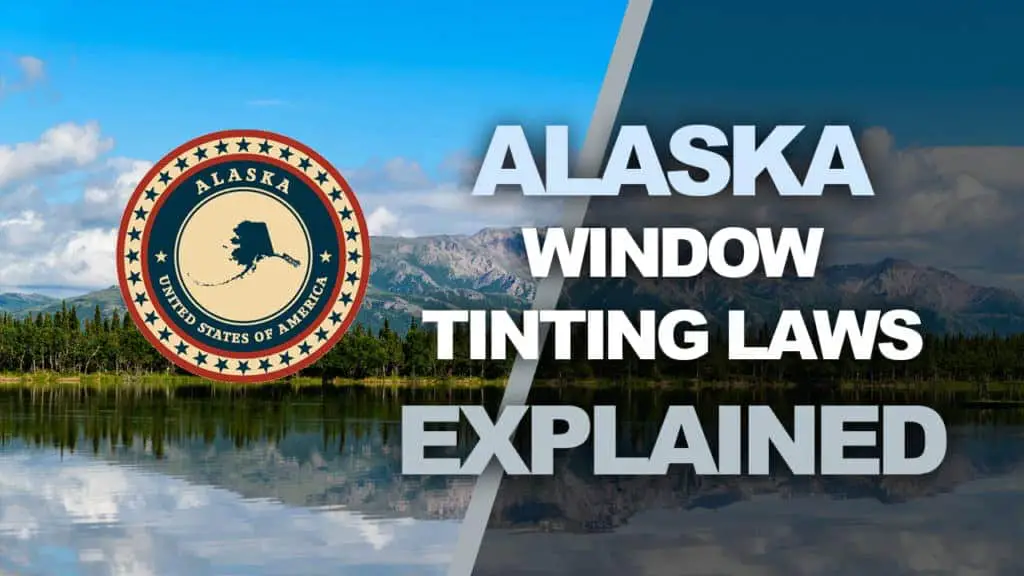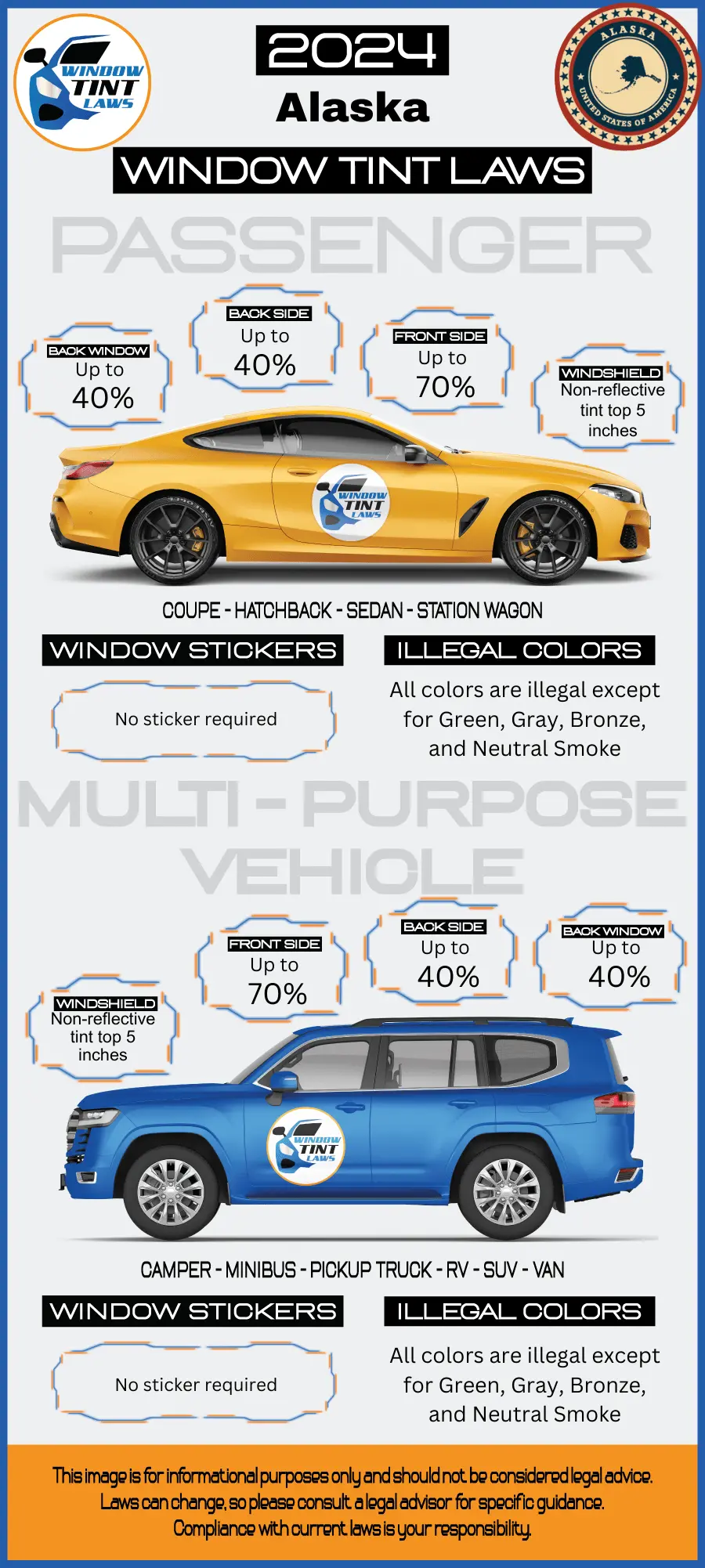
Alaska Tint Laws – 2024 Updated Legal Tint Limit
Please note that Alaska Tint Laws Regulation can change daily and may be interpreted differently at the city or county level. We recommend verifying this information with your local DMV or law enforcement agencies. We have manually fact-checked this content using official state resources. Alaska tint laws were enacted in 1994. If any information provided is incorrect or outdated, please contact us so we can make the necessary corrections. Thank you.
2024 Alaska Tint Laws – Legal Tint Limit For Passenger Vehicles
- Front Windshield: Non-reflective tint is allowed on the top 5 inches of the windshield. Non-reflective tint is allowed above the AS-1 line. No tint is allowed below the AS-1 line or in the wiper sweep area.
- Front seat side windows: up to 70% tint darkness allowed. Must allow at least 70% of light transmission. This means tint can only block up to 30% of light.
- Back seat side windows: up to 40% tint darkness allowed. Must allow at least 40% of light transmission. Tint can block up to 60% of light.
- Rear window: up to 40% tint darkness allowed. Must allow at least 40% of light transmission. Tint can block up to 60% of light.
2024 Alaska Tint Laws – Legal Tint Limit For Multi-Purpose Vehicles
- Front Windshield: Non-reflective tint is allowed on the top 5 inches of the windshield.
- Front seat side windows: up to 70% tint darkness allowed
- Back seat side windows: up to 40% tint darkness allowed
- Rear window: up to 40% tint darkness allowed

- Alaska tint laws medical exemptions permit darker tints on front side windows with a doctor’s note
- Mirrored or reflective tint is prohibited on all windows. Non-reflective, dye-based films are allowed
- Alaska tint laws are statewide with no additional local regulations. Violating the Alaska window tint law may result in a fine up to $300.
What does VLT Mean according to Alaska Tint Laws?
- Window tint film’s light transmission is measured as VLT (Visible Light Transmission) and each state has its own legal limits for VLT on car windows.
- A HIGHER VLT means that more light is allowed to pass through the window tint film.
- Example: a 75% tint will allow 75% of the light to pass through whereas a 5% tint will only allow 5% of the light to pass through, making the 5% tint a much darker film.
- Alaska window tint laws have specific VLT limits for Passenger Vehicles and Multi-Purpose Vehicles.
FAQ’s Regarding Alaska Tint Laws and Alaska Legal Tint Limit
Do I have to have side mirrors in Alaska?
Yes, in Alaska, you are still required to have at least one side mirror on your vehicle even if your windows are tinted. Tinted windows should not obstruct your ability to have a clear view of the road behind you for safety reasons
Is colored tint legal in Alaska?
Colored window tint is generally not legal in Alaska if it significantly impairs the driver’s visibility or does not comply with the state’s window tinting laws, which primarily focus on light transmittance and reflectance. To avoid potential legal issues, it’s essential to ensure that any window tint used in Alaska complies with the specific regulations in place.
How much is a Tint Ticket in Alaska?
The cost of a tint ticket in Alaska can vary based on the specific violation and location, but fines typically range from around $50 to $200 or more. The exact amount may depend on factors such as the darkness of the tint and whether it’s a first-time or repeat offense. To get the most accurate and up-to-date information on tint ticket fines in Alaska, it’s best to check with local authorities or the Alaska Department of Public Safety.
How to get a Tint Exemption in Alaska
Alaska State Law allows window tint medical exemptions to be given to vehicle owners or passengers who regularly drive with the vehicle owner. To file for a medical exemption in Alaska you will need a written statement from a licensed physician in Alaska and must be renewed annually. You must also remember that according to the medical exemption law in Alaska, you need to carry your certification with you in the car at all times.
For more information regarding window tint medical exemptions in Alaska, you can check the resources:
